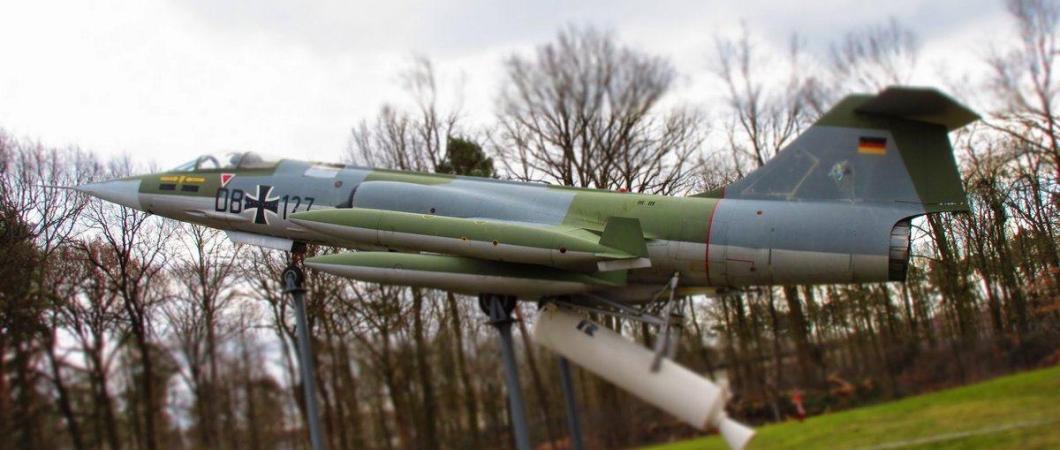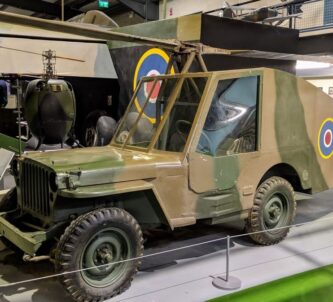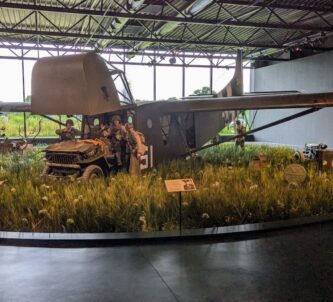In the 1950s, at the height of the Cold War, NATO developed ZELL – the Zero-Length Launch system, using rocket-assisted F-104 Starfighters and other primary attack aircraft.
Being right on the border with the Eastern Bloc, West Germany in particular had little time to identify and intercept any airborne attacks should they occur. Getting airborne and up to altitude quickly was critical.
More importantly, the U.S./NATO thinking at the time was that traditional airbases were easy to target, and so they needed to disperse and hide their interceptors. The solution might be to hide aircraft on mobile launchers in remote locations, which could then be launched by rocket. NATO also thought that mobile ZELL aircraft could be equipped with a nuclear weapon as a retaliatory strike vehicle.
The rocket-assisted take-off was pioneered in the USA using the Republic F-84 Thunderjet, that was later upgraded to an F-100 Super Sabre with a larger rocket pack. But the idea was not unique. The Soviet air force was working on their own programme using MIG-19s.
The most sophisticated version, in terms of aircraft at least, was the West German ZELL programme using F-104 Starfighters, which were notoriously fickle at low speeds and needed the full 300 knots provided by the JATO rocket to get reliably airborne.
The Bundeswehr Luftwaffe and Lockheed developed the system, which they show off in this video. The video also features a ‘sister’ programme: SATS – Short Airfield for Tactical Support. SATS was basically an aircraft carrier on land; a short runway with ‘Cats & Traps’ (a catapult for take-off and arrester wires for landing).
In the end, none of these programmes became operational. They were outpaced by developments in guided missile technology, that left them unviable.
However, this example of a Luftwaffe ZELL Starfighter can be seen at the Luftwaffe Museum in Gatow, just outside Berlin.







